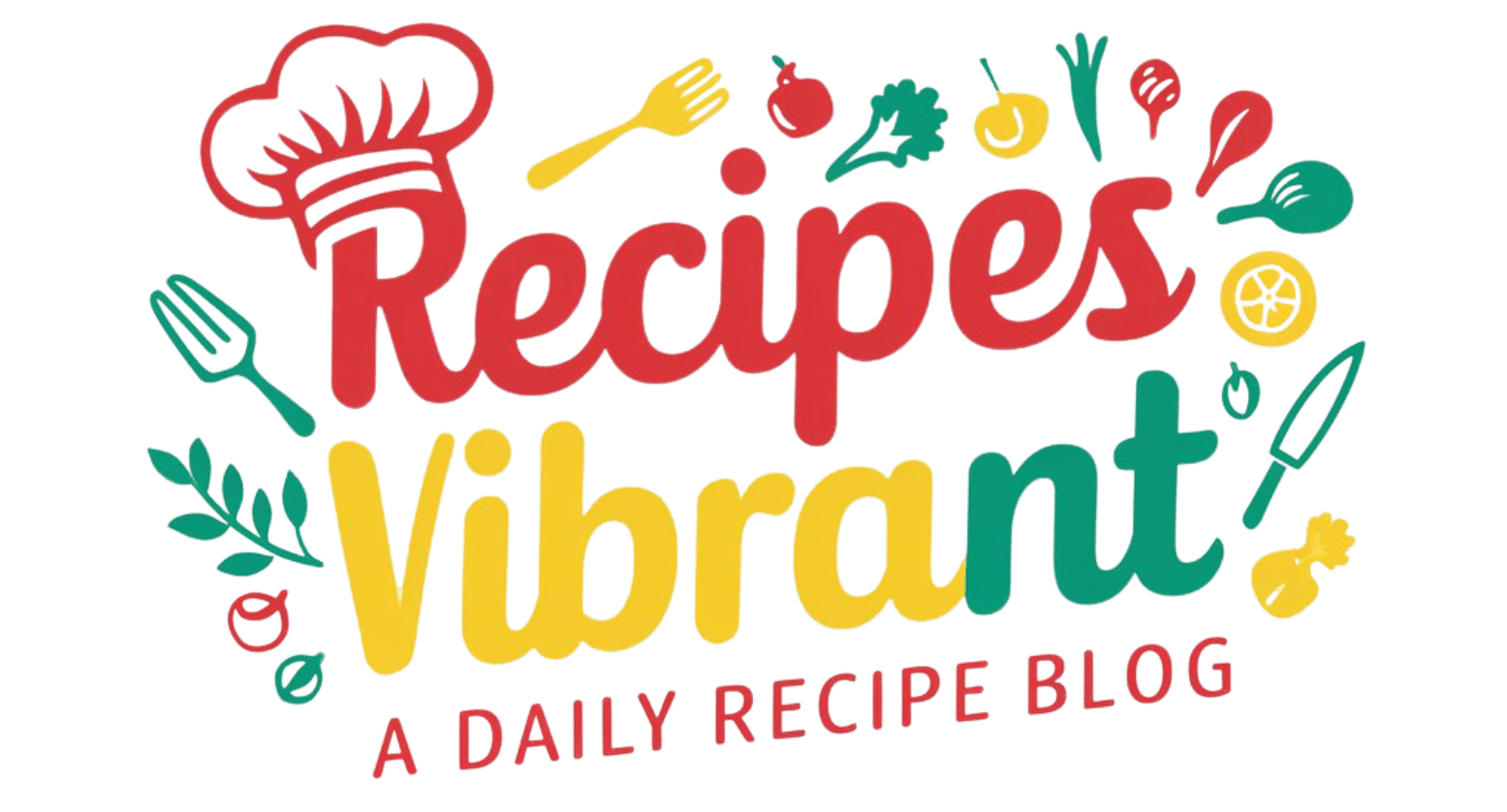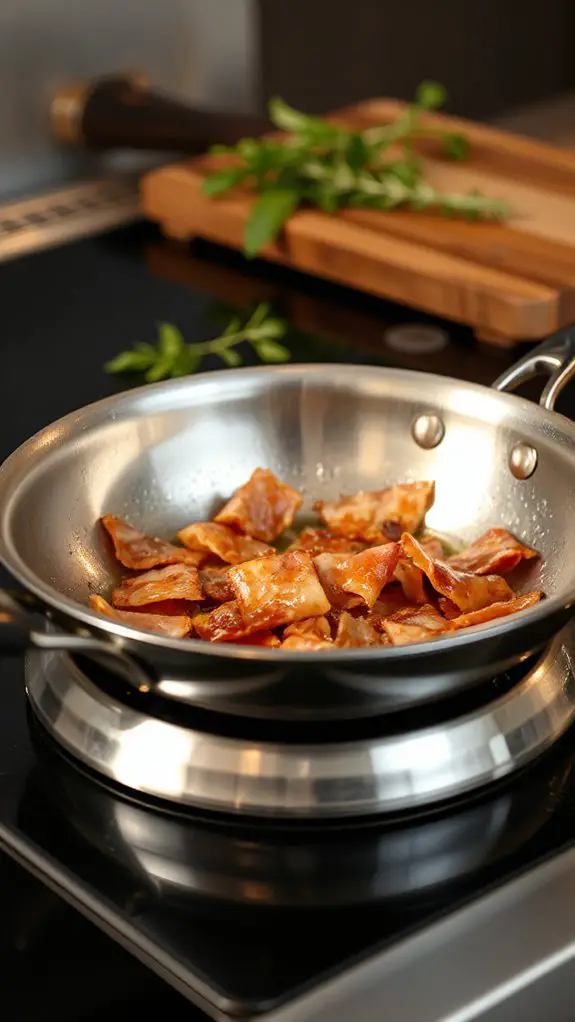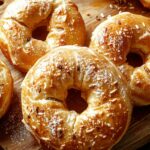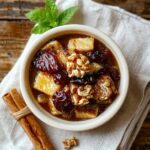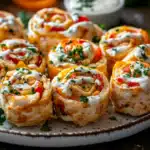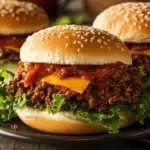I’ve spent months testing frying pans to find the best options for 2025, and I’m excited to share my top picks. Whether you’re searing steaks or flipping pancakes, the right pan can make all the difference. From durable stainless steel to innovative nonstick hybrids, each one offers something unique. Curious which pans made the cut and why they’re worth your kitchen space? Let’s explore the details that set them apart.
Amazon Basics Tri-Ply Stainless Steel Fry Pan, 12 Inch
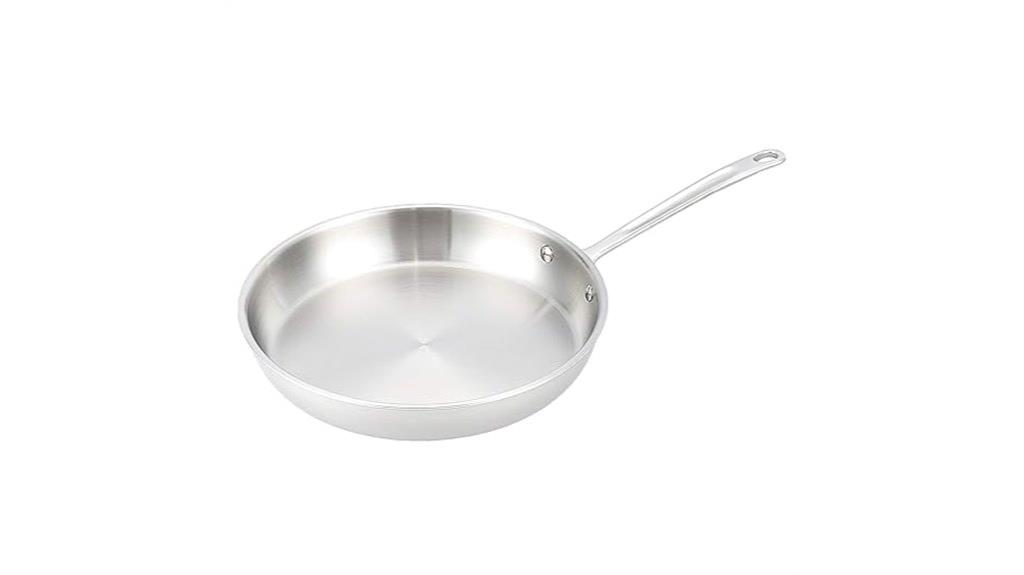
The Amazon Basics Tri-Ply Stainless Steel Fry Pan, 12 Inch, is a standout choice for home cooks looking to upgrade their kitchen tools without breaking the bank. Its tri-ply construction, with an aluminum core and stainless steel exterior, guarantees even heat distribution, making it perfect for frying, searing, and sautéing. The cast stainless-steel handle feels secure and heat-resistant, while the low sides make transferring food a breeze. It works well on gas and induction stovetops and can handle oven temperatures up to 500°F. With proper care, like preheating on low and using a powder scrub for maintenance, it stays durable and reliable for years.
Best For: Home cooks seeking an affordable, durable, and versatile stainless steel fry pan for everyday cooking.
Pros:
- Even heat distribution with tri-ply construction.
- Durable and heat-resistant stainless-steel handle.
- Compatible with gas, induction, and oven use (up to 500°F).
Cons:
- Requires careful preheating and maintenance to prevent sticking.
- Heavier than non-stick alternatives.
- May need time to adjust if transitioning from non-stick pans.
HexClad Hybrid Nonstick 12-Inch Frying Pan
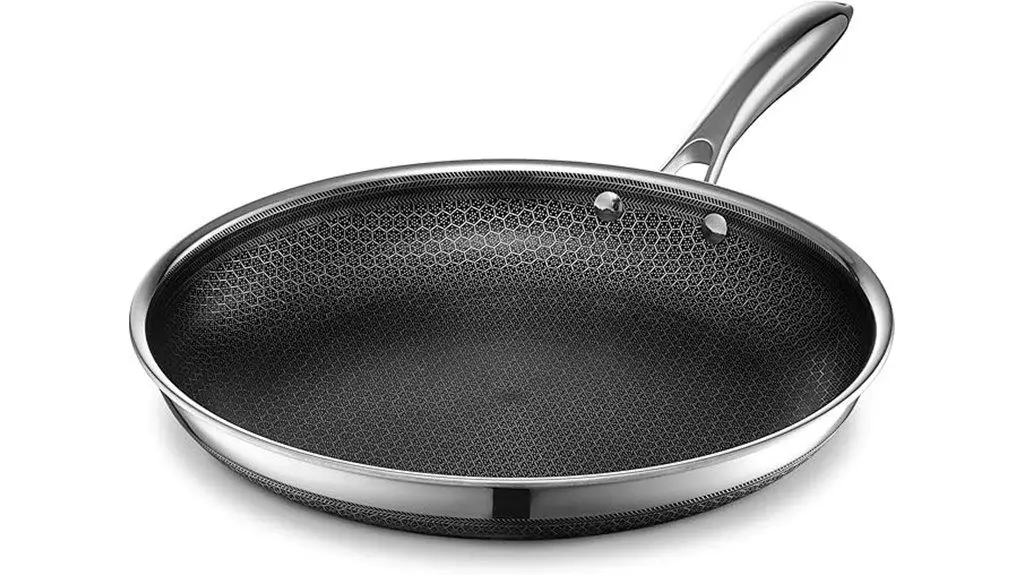
For home cooks who want a versatile, durable pan that can handle just about anything, the HexClad Hybrid Nonstick 12-Inch Frying Pan is a top pick. Its hybrid design blends stainless steel with a ceramic coating, creating a laser-etched hexagonal surface that’s both nonstick and metal utensil-friendly. The tri-ply construction, with an aluminum core, guarantees even heating, whether you’re frying eggs or searing steak. Oven-safe up to 900°F, it’s perfect for finishing dishes in the oven. Plus, it’s dishwasher-safe and backed by a lifetime warranty, making it a reliable choice for busy kitchens. It’s the pan that does it all, effortlessly.
Best For: Home cooks seeking a versatile, durable, and nonstick frying pan for everyday cooking and oven use.
Pros:
- Hybrid nonstick surface is metal utensil-friendly and easy to clean
- Tri-ply construction with aluminum core ensures even heating
- Oven-safe up to 900°F and backed by a lifetime warranty
Cons:
- Lid is sold separately, adding to the overall cost
- Heavier than some other frying pans, weighing 4 pounds
- High price point compared to basic nonstick pans
Caraway Nonstick Ceramic Frying Pan (Marigold)

Looking for a frying pan that keeps cooking healthy and cleanup fuss-free? The Caraway Nonstick Ceramic Frying Pan in Marigold is a standout choice. With its non-toxic, PTFE-free ceramic surface, it makes slide-off-the-pan eggs and golden pancakes a breeze, needing just a little oil or butter. It’s oven-safe up to 550°F, works on all cooktops, and cleans up easily with minimal scrubbing. Free from harmful chemicals like PFOA, PFAS, and lead, it’s safe for both your family and the planet. Plus, its vibrant marigold color brightens up any kitchen while delivering a durable, enjoyable cooking experience. Cooking’s never been this simple—or this fun!
Best For: Home cooks seeking a non-toxic, easy-to-clean frying pan that enhances both cooking performance and kitchen aesthetics.
Pros:
- Non-toxic and free from harmful chemicals like PTFE, PFOA, and PFAS
- Oven-safe up to 550°F and compatible with all cooktops
- Vibrant marigold color adds style to any kitchen
Cons:
- May require careful handling to maintain the ceramic coating’s longevity
- Higher price point compared to traditional nonstick pans
- Limited size options for different cooking needs
Misen 12 Inch Pre-Seasoned Carbon Steel Fry Pan – Lightweight Nonstick Cookware
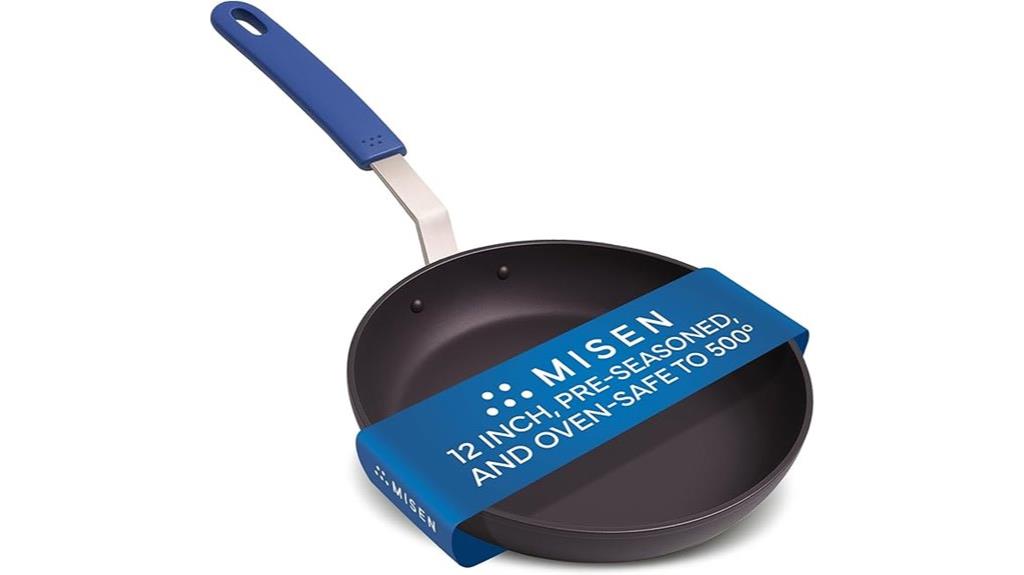
Home cooks who want a pan that’s both lightweight and tough enough to handle daily meals will love the Misen 12 Inch Pre-Seasoned Carbon Steel Fry Pan. Its durable construction offers a natural nonstick surface that gets better with every use, making scrambling eggs or searing steaks a breeze. Lightweight and easy to handle, it’s perfect for sautéed veggies or pan-frying favorites. The pan’s oven-safe up to 500°F, and its heat-resistant silicone grip stays cool, even when things heat up. Plus, it’s simple to clean and built to last, making it a premium addition to any kitchen that’s ready to handle whatever comes its way.
Best For: Home cooks seeking a lightweight, durable, and versatile fry pan for everyday meals.
Pros:
- Durable carbon steel construction with a natural nonstick surface.
- Lightweight design for easy handling and maneuverability.
- Oven-safe up to 500°F with a heat-resistant silicone grip.
Cons:
- Requires regular seasoning to maintain nonstick properties.
- Silicone grip may not be as durable as the pan itself.
- Initial seasoning process may be unfamiliar or inconvenient for some users.
HexClad Hybrid Nonstick 10-Inch Frying Pan
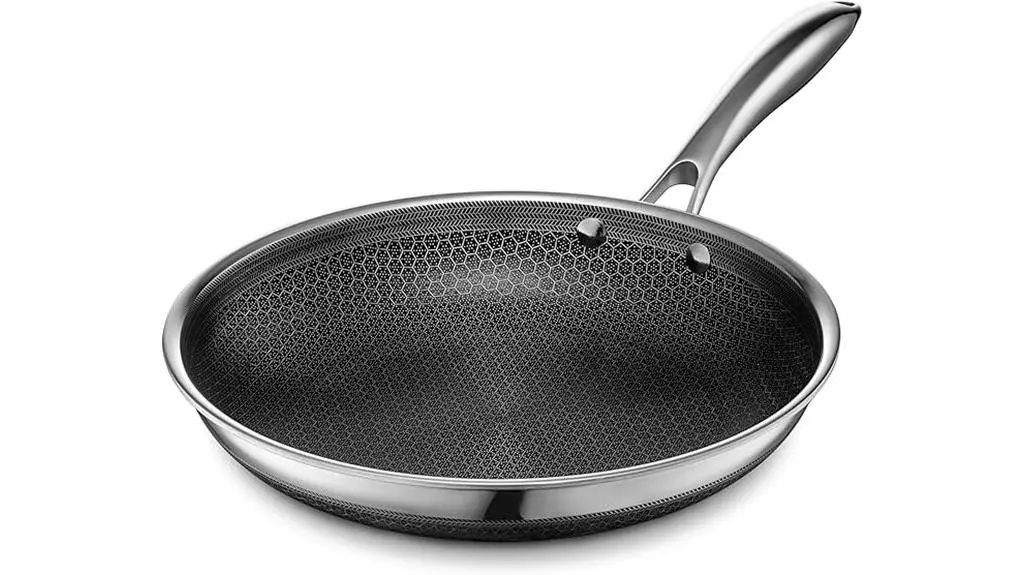
The HexClad Hybrid Nonstick 10-Inch Frying Pan is a standout choice for anyone who loves cooking but hates the hassle of stubborn cleanup. With its unique laser-etched hexagonal surface combining stainless steel and TerraBond ceramic coating, it delivers a nonstick experience that’s both durable and efficient. The tri-ply construction, featuring an aluminum core, guarantees even heating, making it perfect for whipping up a meal for one or two. It’s metal utensil-safe, dishwasher-friendly, and oven-safe up to 900°F, offering versatility for any recipe. Backed by a lifetime warranty, it’s a reliable addition to any kitchen, though it doesn’t include a lid.
Best For: Home cooks seeking a durable, versatile, and easy-to-clean nonstick frying pan for everyday meals.
Pros:
- Hybrid nonstick surface combines stainless steel and ceramic for durability and efficiency.
- Tri-ply construction with aluminum core ensures even heating.
- Metal utensil-safe, dishwasher-friendly, and oven-safe up to 900°F.
Cons:
- Lid not included, requiring separate purchase.
- Higher price point compared to basic nonstick pans.
- Lifetime warranty excludes commercial or restaurant use.
Factors to Consider When Choosing a Frying Pan
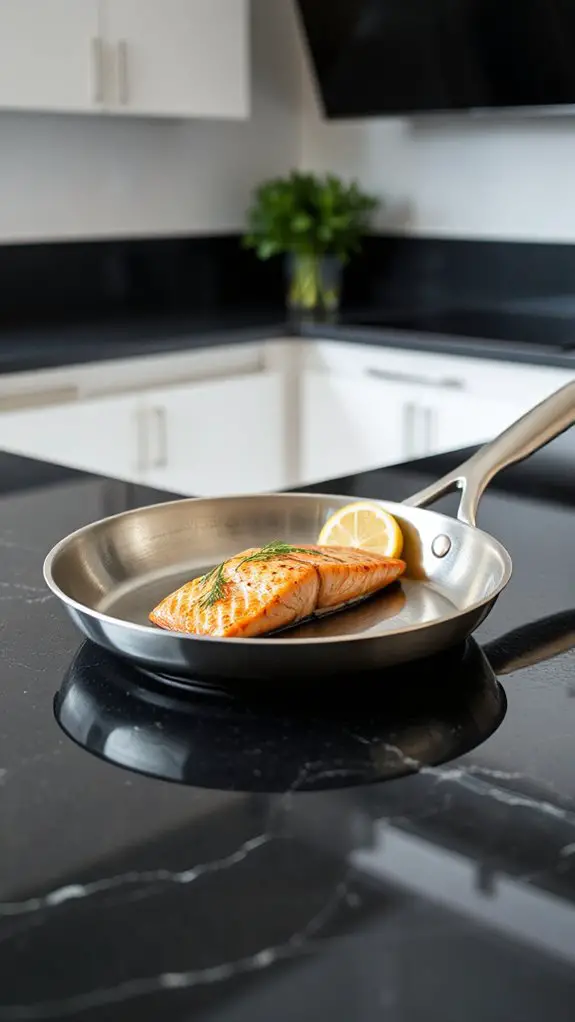
When picking a frying pan, I always check the material and construction first, as it affects how well it cooks and lasts. Heat distribution matters to me because I don’t want hot spots ruining my eggs or pancakes. I also look for nonstick properties, durability, and a comfy handle since they make cooking safer and more enjoyable.
Material and Construction
Because I’m always on the hunt for the perfect tool to make cooking a breeze, I’ve learned that the material and construction of a frying pan can make or break your experience in the kitchen. The type of material you choose, whether it’s stainless steel, nonstick, carbon steel, or cast iron, directly affects how your pan performs. I love tri-ply pans because they’re built with layers—usually stainless steel and aluminum—that make them sturdy and great for even cooking. Nonstick pans are super easy to clean, but I’m careful to avoid coatings with harmful chemicals. Weight is another factor; lighter pans are easier to handle, but heavier ones, like cast iron, hold heat better. Finally, I always check if the pan works with my cooktop, since not all materials are induction-friendly.
Heat Distribution Efficiency
One key feature I always look for in a frying pan is how well it spreads heat across its surface. I’ve found that pans with tri-ply construction, like those mixing aluminum and stainless steel, do an excellent job of cooking food evenly. Aluminum’s high thermal conductivity means the pan heats up fast and responds quickly when I adjust the temperature, which is great for delicate dishes. Thicker pans are a favorite of mine because they retain heat better, reducing hot spots that can ruin a meal. If you’re using an induction stovetop, pans with magnetic metals heat up faster and give you more control. Smooth surfaces are also key—I avoid anything porous or uneven since they can trap heat and lead to uneven cooking.
Nonstick Properties
Although I’m a fan of versatile cookware, I’ve got to admit—nothing beats the convenience of a good nonstick frying pan. Nonstick surfaces, often made from PTFE, ceramic, or enamel, make cooking a breeze by reducing the need for oil and letting food slide right off the pan. That said, not all nonstick coatings are created equal. Higher-quality options tend to resist scratches and wear better, giving you a smoother cooking experience for longer. I also appreciate pans that can handle higher heat or are oven-safe—they’re game-changers for dishes like frittatas or baked chicken. Just remember, using silicone or wooden utensils and avoiding high heat keeps the nonstick properties intact. For peace of mind, I always check if the pan is free from chemicals like PFOA and PTFE—it’s a small detail that makes a big difference for health-conscious cooks like me.
Durability and Longevity
While nonstick pans make cooking easier, they’re not always the toughest option out there. I’ve found that materials like stainless steel and carbon steel hold up better over time, especially when I crank up the heat. Tri-ply pans, with their layers of stainless steel and aluminum, are my go-to because they resist warping and distribute heat evenly. Pre-seasoned carbon steel pans get better with use, developing a natural nonstick coating that lasts for years if I care for them right. I always check for warranties too—knowing the company stands behind their product gives me peace of mind. And remember, using the right heat and cleaning methods, like avoiding harsh scrubbers, keeps my pans in great shape longer. A durable pan is worth the investment!
Handle Comfort and Safety
When I’m choosing a frying pan, how the handle feels in my hand makes a big difference—trust me, I’ve learned this the hard way! A comfortable grip is key, especially when lifting or tilting a heavy pan. I always look for handles made of heat-resistant materials like cast stainless steel; they keep my hands safe even when the pan gets super hot. Riveted handles are my go-to because they’re sturdy and won’t wiggle loose over time. Balance is also important—if the handle is too heavy or too light, it can make cooking feel awkward. I’ve burned my fingers on poorly insulated handles, so I make sure they’re designed to stay cool. A well-designed handle makes cooking safer and more enjoyable, and I never compromise on it!
Compatibility With Cooktops
After making sure the handle feels just right in my hand, I turn my attention to how well the frying pan works with my cooktop. Compatibility matters—my gas stove heats differently than induction or electric, so I need a pan that adapts. Tri-ply pans with aluminum cores are my go-to because they distribute heat evenly on all surfaces, even induction. I also check if the base is flat and sturdy; warped pans mess with heat distribution. Nonstick pans with metal-safe coatings are versatile, but I always confirm their oven safety, especially for high temps. Personally, I’ve learned the hard way that not all pans work on induction, so I double-check before buying. A pan that fits my cooktop makes cooking smoother, tastier, and way less frustrating.
Ease of Cleaning
Ever wonder why some pans feel like a breeze to clean while others turn into a scrubbing nightmare? The secret often lies in the material. Nonstick pans, like ceramic or coated ones, are my go-to because food slides right off, and a quick wipe does the job. Stainless steel, on the other hand, can be tricky—I’ve spent way too long scrubbing burnt bits, even with cleaners like Bar Keepers Friend. Carbon steel pans are a middle ground; they get better with use, needing less effort over time. I also love that many pans are dishwasher-safe—total lifesavers after a big meal! Just remember, using the right heat helps prevent stuck-on messes. Trust me, a little care upfront saves so much elbow grease later!
Oven-Safe Temperature Limits
Cleaning your pan is one thing, but knowing how it handles the oven can make or break your cooking game. When I’m searching for a frying pan, I always check its oven-safe temperature limit—it tells me how hot it can get without warping or getting damaged. For example, ceramic-coated pans usually max out around 550°F, while stainless steel can often handle up to 900°F. Carbon steel and some alloys are even tougher, which makes them great for high-heat tasks. I also make sure the handles and lids are oven-safe since they might have different heat tolerances than the pan itself. Knowing these details lets me finish dishes in the oven or broil without worrying about ruining my pan. It’s a small step that makes a big difference!
Frequently Asked Questions
Can Frying Pans Be Used in the Oven?
Yes, I can use frying pans in the oven, but I need to check their material and handles first. Stainless steel, cast iron, and some oven-safe nonstick pans work well, while plastic or silicone handles may not.
How Do I Prevent Food From Sticking?
I’ll heat the pan before adding oil, I’ll make sure the oil shimmers before cooking, and I’ll avoid moving food too soon. I’ll use the right amount of oil, keep the heat steady, and clean the pan properly.
What Is the Best Way to Clean Nonstick Pans?
I always clean my nonstick pans with warm, soapy water and a soft sponge to avoid scratching the coating. I never use abrasive scrubbers or harsh cleaners, and I make sure to dry them thoroughly after washing.
Are Ceramic Pans Safer Than Teflon?
Over 90% of ceramic pans lack harmful chemicals like PFOA, which are found in some Teflon coatings. I believe ceramic pans are safer because they’re free from these toxins and don’t release fumes at high temperatures.
Can I Use Metal Utensils on Nonstick Pans?
I avoid using metal utensils on nonstick pans because they can scratch or damage the coating. Instead, I opt for silicone, wood, or plastic utensils to keep the surface intact and extend the pan’s lifespan.
Conclusion
So there you have it—my top picks for frying pans in 2025! Whether you’re searing, sautéing, or just trying not to burn your eggs (we’ve all been there), these pans have your back. Like a trusty sidekick in the kitchen, the right pan makes all the difference. Now, go grab one, get cooking, and let those flavors shine. Happy frying, and may your meals always stick to the plate, not the pan!
